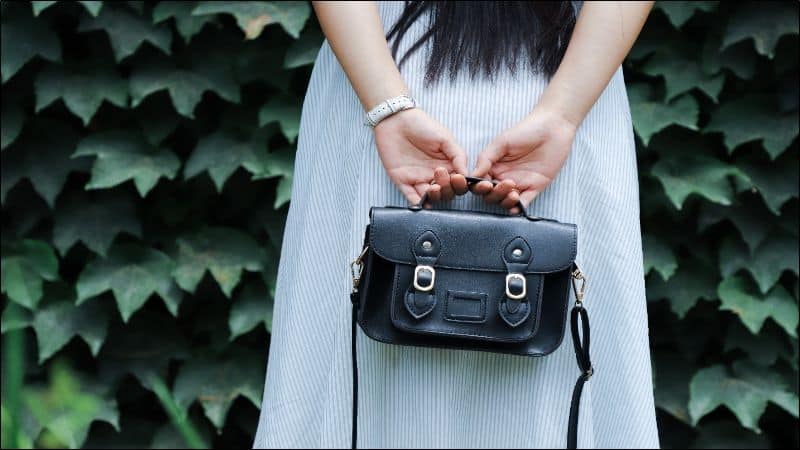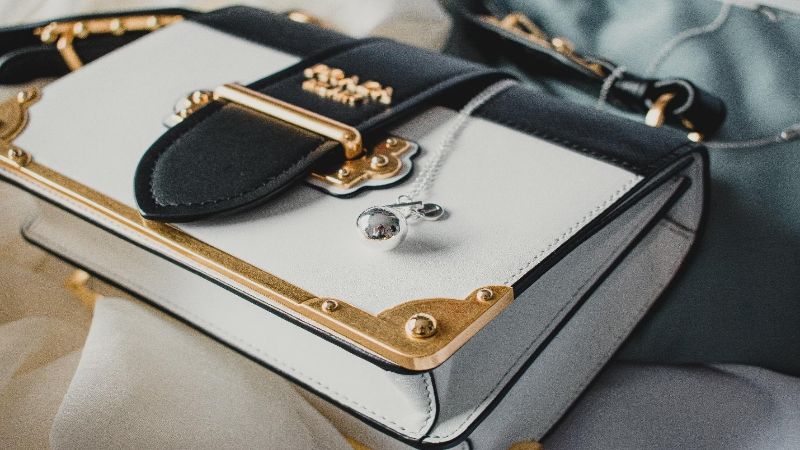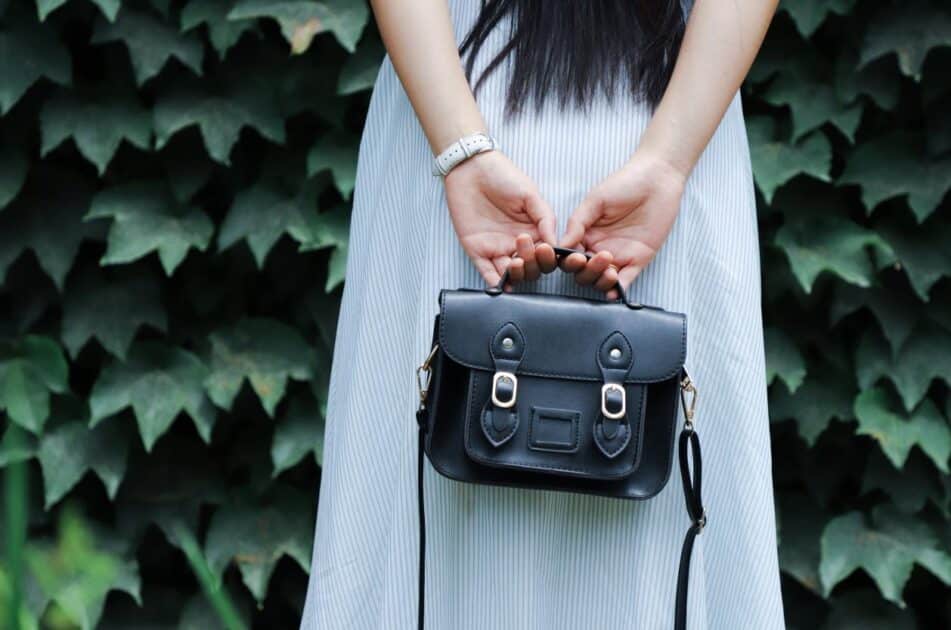Ever found yourself tugging at a handbag strap that just won’t sit right? You’re not alone. Whether it’s a crossbody that rides up or a shoulder bag that keeps slipping, an ill-fitting strap can be a real hassle. But don’t worry, you’ve got options to fix that.

Extending your handbag strap is a simple DIY trick that can make all the difference. With a few tools and a bit of know-how, you’ll be on your way to a more comfortable carry. Let’s dive into how you can give your favorite bag the perfect fit.
Why do handbag straps need extending?
Imagine the excitement of finding the perfect handbag. Now, picture the disappointment when the strap digs into your shoulder or swings awkwardly by your side. That’s where the need to extend handbag straps comes in. Think about it: not every handbag is one-size-fits-all. Many times, straps are designed with average heights and body types in mind, leaving out a vast number of people who don’t fit that mold.
Adjustability is key. Perhaps you’re taller or shorter than the average design anticipates. Or maybe you prefer your bag to hit a specific spot on your body, whether it’s for style or accessibility. Extending the handbag strap allows you to tailor the length to your needs.
Consider the four seasons. Your strap might feel just right in the summer over light clothing but come winter, with bulky coats and layers, it’s suddenly too short. The flexibility to adjust the strap length makes your bag versatile all year round.
Utility can’t be ignored either. Sometimes you need your hands free and the only way to achieve that convenience and comfort is by transforming your handbag into a crossbody with a longer strap. It’s not just about carrying; it’s about enhancing your daily life.
Lastly, personal style plays a big role. Fashion is expressive; it’s an extension of oneself. Tweaking the length of your handbag strap can change the entire aesthetic of an outfit. It makes a statement, asserts a look, and defies the standards set by mass-produced fashion.
In short, extending a handbag strap is a minor tweak that can have a major impact. It’s about customizing your comfort, ensuring functional utility, adapting to various circumstances, and most importantly, expressing who you are.
Tools you will need
Venturing into the realm of DIY handbag adjustments means you’ve got to be equipped with the right tools. To extend your handbag strap and achieve that perfect length, here’s what you’ll need:
- A leather hole punch, for adding new holes to leather straps.
- A seam ripper or small pair of scissors, handy for detaching sewn parts.
- An extra strap or material that matches or complements your original strap.
- Heavy-duty thread in a shade that blends with your strap for a clean look.
- A needle or a sewing machine, depending on your comfort and skills.
- Rivets or Chicago screws, which are the golden ticket for non-sew solutions.
- A hammer or rivet gun, to secure attachments without a stitch in sight.
- Strong adhesive, if you’re opting for a glue-based approach.
- Measuring tape, because accuracy is never to be compromised.
- Lastly, a pair of pliers, just in case you need to remove or adjust hardware.
Remember, the quality of your tools will largely influence the final result, so invest in good-quality items that will stand the test of time and multiple DIY projects.
If you’re unsure about which brand of tools to choose, ask for recommendations at your local craft store or seek advice from fellow DIY enthusiasts online. With these tools at your disposal, you’re ready to tackle the challenge and bring that extra comfort and style to your handbag with finesse. Now, roll up your sleeves and let’s get into the nitty-gritty of the actual process.
Step 1: Assess your handbag strap
Before diving into the extension process, take a moment to examine the existing handbag strap. Look for the type of material, as the durability and stretch will influence your approach. Is it leather, synthetic, or fabric? Each necessitates a different method.
Check the strap’s connection points to the handbag. Are they sewn, riveted, or attached with hardware? This insight directs you on whether you’ll be sewing on extra material or attaching it with rivets or screws.
Measure the current length of the strap. How much longer do you need it to be? It’s not just about the strap itself; consider the bag’s size when determining the new length. It should proportionally balance with the overall design.
Examine the width of the strap. Any added material must match to ensure a seamless look and maintain strength. If the strap has a unique pattern or texture, finding a matching piece can be trickier.
Focus also on how the strap feels. Is it too stiff, too flimsy, or just right? Your added material should mimic this feel to maintain comfort and coherence.
Decide on the strap extension method. Will you add an entirely new piece? Perhaps you’re inserting a section in the middle, or maybe you’re attaching a secondary strap with a buckle for adjustability. Your choice will dictate the next steps and the tools you’ll be putting to use.
Taking these factors into account sets the stage for a successful strap extension. Armed with this knowledge, you’re ready to gather the materials that will bring your revamped handbag to life.
Step 2: Determine the desired length
Getting the length of your handbag strap right is crucial for both comfort and style. Assess your needs by considering how you’ll carry the bag once it’s extended.
« Can I Take a Handbag with My Hand Luggage? Airline Baggage Tips Revealed
How to Measure Purse Dimensions Like a Pro: Quick & Easy Guide »
Ask yourself:
- Do you prefer your handbag to sit at your hip, waist, or below your hip?
- Are you planning to wear it over the shoulder, across the body, or as a backpack?
Measure the current strap from end to end, and then the intended extra length using a flexible tape measure. If you don’t own one, use a piece of string then measure it against a ruler. Record these measurements; they are key in creating the perfect strap length.
Practical Considerations
Remember, the strap affects how the bag balances and moves with your body. Opt for a length that keeps the bag secure against your side but leaves you free to move.
Visual Balance
It’s not just about function—the strap length can change the entire look of your bag. A longer strap could provide a more casual, slouchy look, while a shorter one might be more formal and structured.
- Temporarily attach a string or ribbon to your bag to simulate the extended strap.
- Adjust it to find your ideal length.
- Stand in front of a mirror and ensure the bag sits where it’s both practical and visually appealing.
Take note of how the length feels when you’re moving. The bag should not swing wildly or impede your movement. Once you’ve settled on the perfect length, write down the measurement. You’ll use this for the strap extension process. It’s essential to double-check your measurements for accuracy before moving on to the next step.
Step 3: Gather materials
Before delving into the extension process, you’ll want to gather all the necessary materials. Ensure each item is close at hand to streamline your workflow. Remember, choosing quality materials will contribute significantly to the durability and aesthetics of your handbag strap.
Start with the strap material. Leather is a popular choice for its resilience and classic appeal. For a seamless look, match the color and texture with your existing strap. If you’re feeling adventurous, consider a contrasting color to add a unique touch to your bag.
Next, source a Strong Adhesive or a needle and thread. This will depend on whether you’re opting to sew the additional strap piece or glue it. Sewing provides a more professional finish and longevity, but glue might be the quicker option if you’re in a pinch.
You’ll also need a pair of sharp scissors or a leather cutter for clean cuts. Ensure they’re specifically designed for cutting fabrics or leather to avoid frayed edges or ragged cuts.
Hardware is crucial; this includes extension clasps, buckles, or rings to connect the new strap piece. These should match in color and style with the existing hardware on your bag for coherence.
Lastly, pick up a ruler or measuring tape for precision, as well as a pen or tailor’s chalk to mark your measurements.
Here’s a quick rundown of your materials checklist:
- Strap material (leather, fabric, etc.)
- Strong Adhesive or sewing supplies
- Scissors or leather cutter
- Matching hardware (clasps, buckles, rings)
- Ruler or measuring tape
- Pen or tailor’s chalk
Once you’ve gathered these items, you’re prepared to take on the task of extending your handbag strap. Each tool plays a part in achieving a satisfying result that not only looks good but is also functional for daily use.
Step 4: Remove the strap
Getting the strap off your handbag can be straightforward or a bit tricky, depending on the design of your bag. First, inspect how the strap is attached to the bag. You’re looking for clasps, screws, or stitches that hold the strap in place. If you find clasps or screws, simply open or unscrew them to detach the strap.
For a stitched-in strap, you’ll need a seam ripper or small scissors. Take care not to damage the leather or fabric of the bag as you cut the stitches. Work slowly and gently pull the strap away from the bag as the stitches are removed.
Next, once the strap is detached, examine the ends. If there are metal brackets or hardware, you might want to reuse them for the new strap. Carefully remove these pieces and set them aside.
Here’s a list of what you should have accomplished:
- Identify attachment method: clasps, screws, or stitches
- Detach strap using appropriate tools: clasps (open), screws (unscrew), or stitches (cut)
- Reserve hardware if applicable
In case your handbag strap is looped through a buckle, you may slide it out after releasing any closure keeping it in place. Remember to keep all the parts you remove; sometimes the smallest piece is crucial when attaching the new extended strap.
If you come across any stubborn attachments, applying a small amount of leather conditioner or oil can loosen them up. Be mindful not to use too much, as it might stain or soften the leather more than desired.
As you remove the strap, consider the condition of the attachment points on the handbag. They should be robust and intact for the new strap to be secure. If there’s any sign of wear or weakness, you might need to reinforce these areas before moving ahead with attaching the extended strap.
Your handbag is now ready for the next step, which involves preparing the new strap for attachment. Ensure all tools and materials are on hand to continue with a smooth transition into extending your handbag strap.
Step 5: Measure and cut the new strap
Finding the right length for your new strap is crucial. Measure twice, cut once—it’s an age-old adage that remains relevant. Lay your original strap next to the new material. Match end to end if you’re going for the same length. But you’re here to extend, so decide how many inches longer you need. Don’t forget some extra for attachment points.
Material choice impacts your comfort and the bag’s look. Leather? Nylon? Think long-term use and pick robust materials. Mark the desired length on the new strap. Use a ruler for straight lines. Precision is key.
Cutting tools matter. Scissors are fine for thinner materials. Heavy-duty straps may require a rotary cutter or a leather punch for leather. Clean cuts are non-negotiable. Frays or uneven edges can spell disaster.
Secure the end of the strap before cutting. A simple clamp or heavy book prevents slipping. Ensure your work surface is suitable—for instance, use a cutting mat to protect your table and tools.
Cut with confidence but caution. Follow your marked line. Double-check your measurements before the final slice. Remember, it’s about enhancing the strap, not just extending it.
Once cut, test the new strap against your bag. Hold it in place. It should align with expectations in terms of length and aesthetics. Adjustments at this point are easier than after attachment.
Ready to move forward? You’ve got a cut strap prepped for the next steps: sealing edges, adding hardware, and reattaching to your bag. Each phase brings you closer to revamping your beloved accessory, tailor-made to suit your style.
Step 6: Attach the new strap
Once you’ve tailored your new strap and you’re happy with its length, it’s time to attach it to your handbag. This step will infuse fresh life into your accessory, instantly updating its look.
Prepare the Hardware
Your bag’s design dictates the type of hardware you’ll need. For most, that means either a set of clasps or rings. Here’s what you need to do:
- Lay out your hardware.
- Make sure they’re the correct size and style for your bag.
- Often, you’ll use the same hardware from your old strap.
Securing the Strap
With your hardware sorted, follow these instructions to secure the new strap:
- If you’re reusing existing clasps, attach them to the ends of your new strap.
- For rings, slide the strap’s end through and fold it back on itself.
- Sew the strap securely against itself to form a loop around the ring.
Test Its Strength
Before you venture out, it’s paramount to ensure your strap is securely attached. Give it a tug to check its strength. If you’ve opted to sew, the stitches must be tight and robust—nobody wants a strap failure mid-strut!
Adjusting for Comfort
Once attached, put the bag over your shoulder to gauge the drop length. It should be comfortable, allowing easy access to your bag without straining your shoulder. If you need to make adjustments, now’s the time to do it before finalizing your handy work.
Remember, this stage is about achieving both practicality and style. You’re aiming for a strap that not only looks good but feels right as well. Your refreshed handbag shouldn’t just turn heads; it should also be a joy to carry around.
Step 7: Test and adjust
After you’ve attached the new strap with the right hardware, it’s time to put it to the test. Don your handbag as you normally would and go about your day. This real-world test drive is critical; it’ll reveal if the strap’s length is just right or if it needs tweaking. You’re looking for comfort and a strap that complements your body’s frame.
If the strap digs into your shoulder, it’s too thin or maybe the material isn’t cut out for the load. You might need a wider or padded strap in that case. On the flip side, if the bag swings too much, it might be a sign that the strap is too long. Adjust accordingly.
Make sure you check the hardware as you test. You don’t want clasps that pop open unexpectedly or rings that bend under the weight. Trust your instincts here—if something feels off, it probably is.
Keep an eye on the bag’s balance. An uneven strap can cause the bag to sit awkwardly or even spill its contents. If that happens, it’s a matter of adjusting either the strap’s length or the way it’s attached to the bag.
Lastly, remember that straps can stretch over time, especially leather ones. What feels like a perfect fit now might need a re-adjustment after a few weeks of use. So, keep your tools handy and stay prepared to make small changes as needed.
Your handbag isn’t just a fashion statement; it’s a daily companion. Ensuring the strap is both comfortable and secure will make your experience of using it that much better. Stay in tune with your bag’s performance and adjust when necessary.
Conclusion
Now that you’ve expertly extended your handbag strap, you’re all set to step out in style and comfort. Remember, it’s all about finding that sweet spot where your bag sits just right, making your day-to-day carry a breeze. Don’t hesitate to tweak it here and there until it feels perfect. After all, you’ve got the know-how, and your bag’s fit should be as unique as you are. Keep rocking that handbag with its new, customized strap and enjoy the added comfort on your shoulder!
Frequently Asked Questions
What is the focus of step 7 in adjusting a handbag strap?
Step 7 involves testing the new strap by wearing the handbag normally to check for comfort and fit. Adjustments should be made if the strap is uncomfortable or if the bag swings excessively.
How can I tell if my handbag strap requires further adjustments?
If the strap digs into your shoulder or if the handbag swings too much while you walk, it may require further adjustments to ensure comfort and proper function.
Why is it important to check the hardware when adjusting my handbag strap?
Checking the hardware is crucial because it can reveal issues that might lead to the bag failing. Ensure all connections are secure and that there’s no excessive wear or damage.
What should be maintained to keep the handbag balanced?
It’s important to maintain the balance of the bag by evenly distributing weight and making small changes as needed to prevent discomfort and uneven wear.










